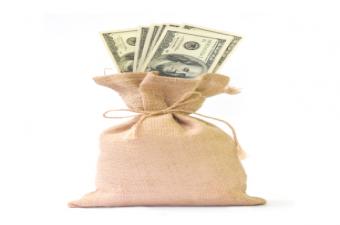Driven by stronger auto sales but held back by falling gasoline sales, total retail sales increased 0.6 percent in May, the ""Census Bureau"":http://www2.census.gov/retail/releases/historical/marts/adv1305.pdf reported Thursday.
[IMAGE]Economists had expected sales to increase 0.5 percent. In April, retail sales rose 0.1 percent.
Excluding auto sales, retail activity increased 0.3 percent in May compared with April, when it was essentially flat.
Total retail activity rose $2.3 billion in May, of which auto sales accounted for $1.4 billion. Sales at gasoline stations fell $86 million month-over-month. Consumers did not transfer the savings at the pump to other merchandise. Gasoline prices rose about 4 cents per gallon from April ($3.64) to May ($3.68).
The increase in retail sales came in the same month the Bureau of Labor Statistics (BLS) reported almost 28,000 new retail jobs.
In May, sales at furniture stores, electronic stores, and clothing stores dropped, while sales increased at building and garden supply stores, food and beverage stores, and [COLUMN_BREAK]
health and personal car stores. Perhaps as a signal of warmer weather, sales at sporting goods stores increased. Sales at restaurants fell in May, despite the report by BLS that restaurant employment grew about 38,000 that month.
While often reported as a measure of consumer activity, the retail sales report is price-driven. Data in the report are ""adjusted for seasonal variation and holiday and trading-day differences, but not for price changes,"" according to the Census Bureau.
On a yearly basis, May sales were up 4.3 percent compared with a 3.7 percent year-over-year increase in April.
The increase in auto sales accounted for 61 percent of the total increase in retail sales. Food and beverage stores accounted for about 16 percent of the monthly increase and building and garden supply stores about 10 percent.
Sales increased $270 million at non-store retailers, improving for the seventh straight month and the 14th time in the last 16 months, threatening commercial retail space.
In May, total retail employment increased a net 27,700, according to BLS, improving in most sub-categories except health and personal care stores and sporting goods stores. Employment at food and beverage stores increased by about 4,600 in May.
Also, according to BLS, average hourly earnings increased by just one cent to $23.89, while the average workweek remained flat at 34.5 hours.
_Hear Mark Lieberman on P.O.T.U.S.--Sirius 124--every Friday at 6:20 a.m._

 theMReport.com Your trusted source for mortgage banking news
theMReport.com Your trusted source for mortgage banking news









